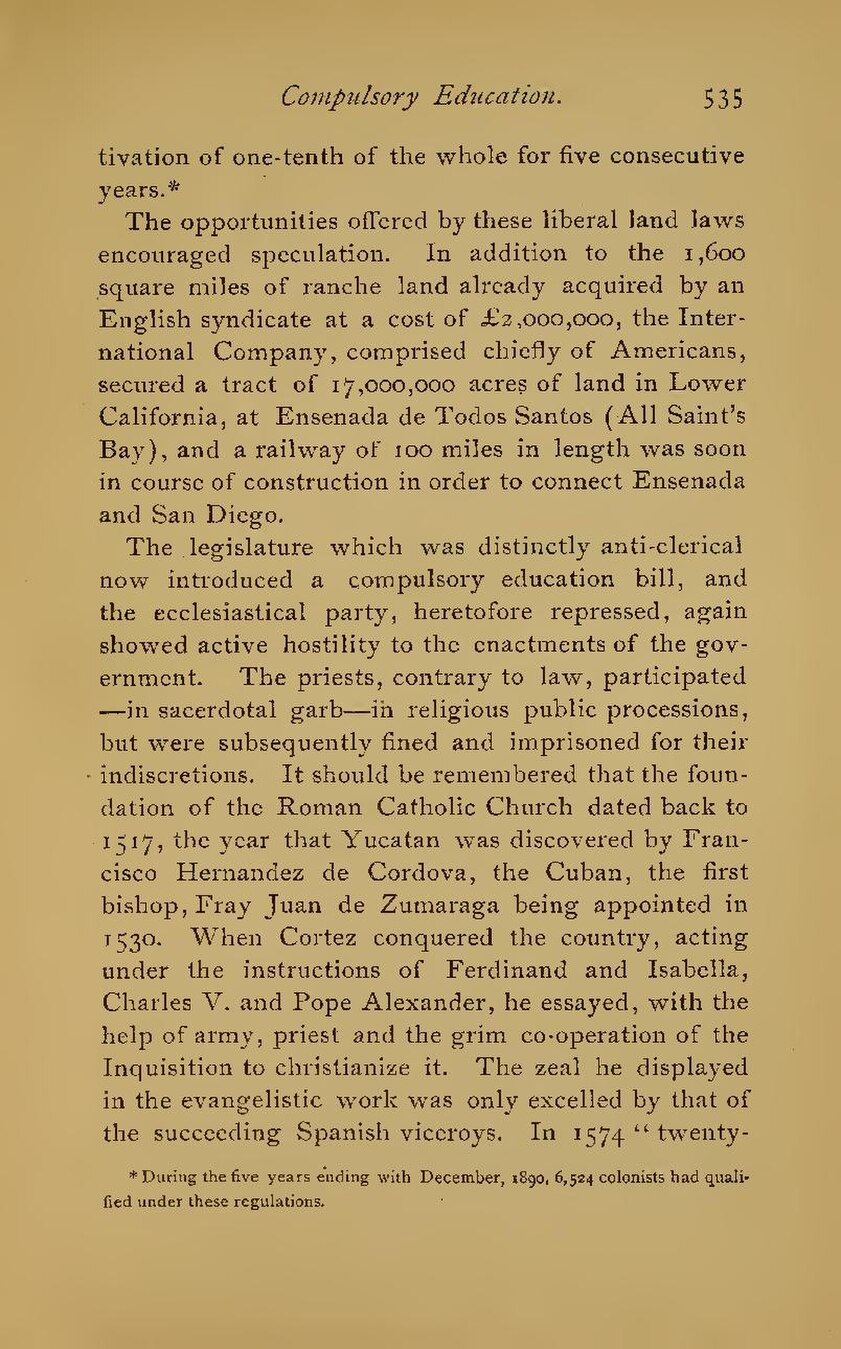tivation of one-tenth of the whole for five consecutive years.[1]
The opportunities offered by these liberal land laws encouraged speculation. In addition to the 1,600 square miles of ranch land already acquired by an English syndicate at a cost of £2,000,000, the International Company, comprised chiefly of Americans, secured a tract of 17,000,000 acres of land in Lower California, at Ensenada de Todos Santos (All Saint's Bay), and a railway of 100 miles in length was soon in course of construction in order to connect Ensenada and San Diego.
The legislature which was distinctly anti-clerical now introduced a compulsory education bill, and the ecclesiastical party, heretofore repressed, again showed active hostility to the enactments of the government. The priests, contrary to law, participated—in sacerdotal garb—in religious public processions, but were subsequently fined and imprisoned for their indiscretions. It should be remembered that the foundation of the Roman Catholic Church dated back to 1517, the year that Yucatan was discovered by Francisco Hernandez de Cordova, the Cuban, the first bishop, Fray Juan de Zumaraga being appointed in 1530. When Cortez conquered the country, acting under the instructions of Ferdinand and Isabella, Charles V. and Pope Alexander, he essayed, with the help of army, priest and the grim co-operation of the Inquisition to christianize it. The zeal he displayed in the evangelistic work was only excelled by that of the succeeding Spanish viceroys. In 1574 "twenty-
- ↑ During the five years ending with December, 1890, 6,524 colonists had qualified under these regulations.
